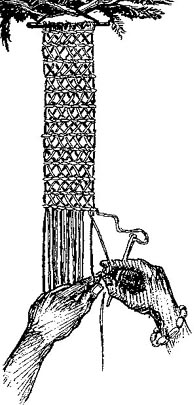 |
|
CURRENT
RESEARCH |
|
Learn
more about
Indiana Archaeology Month at Hovey Lake HERE! |
| Research
at the Hovey Lake site in 2003-2005 is supported by: a grant from
the Federal Highway Administration
(FHWA) under the Transportation Enhancement Program, Indiana
University, and private contributions. The Indiana
Department of Transportation (INDOT) administers the TE grant.
Also contributing to the research project are: Indiana Geological Survey, Indiana
University - Bloomington Department of Anthropology, the Indiana State Museum, University of Southern
Indiana, University of Evansville,
Indiana State University, and
community groups and volunteers. |
|
Last
Updated 9.6.2004
|
Production and Trade

In their daily lives,
the people at the Hovey Lake village used pottery for a variety of things.
Shallow pans, plates, and bowls were used for cooking, serving, and eating
food. Jars with handles were made for cooking and storage, and bottles
were fashioned to haul and store water.

Various kinds of stone tools were made by the villagers. They formed the tools from chert (also called flint), using a process called knapping. By this method, they manufactured knives, gouges, hide scrapers, drills, and triangular arrowheads.

Villagers wove a variety
of fabric items such as blankets, wraps, skirts, and bags, using yarns
spun from plant fibers. Knotted nets were another type of fabric.

The Caborn-Welborn people traded widely, acquiring items from Michigan, Minnesota, Illinois, Tennessee, and the Gulf Coast among other areas. Disk pipes of catlinite were one type of exchange item. A few European trade goods, such as brass tinklers, are found as well. European metal and glass might have been acquired from other Native American groups who lived closer to the trading outposts in the Great Lakes and the south and east coasts of the U.S.


